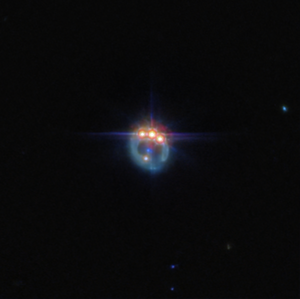Accept all cookies Accept only essential cookies See our Cookie Notice

About ESA
The European Space Agency (ESA) is Europe’s gateway to space. Its mission is to shape the development of Europe’s space capability and ensure that investment in space continues to deliver benefits to the citizens of Europe and the world.
Highlights
ESA - United space in Europe
This is ESA ESA facts Member States & Cooperating States Funding Director General Top management For Member State Delegations European vision European Space Policy ESA & EU Space Councils Responsibility & Sustainability Annual Report Calendar of meetings Corporate newsEstablishments & sites
ESA Headquarters ESA ESTEC ESA ESOC ESA ESRIN ESA EAC ESA ESAC Europe's Spaceport ESA ESEC ESA ECSAT Brussels Office Washington OfficeWorking with ESA
Business with ESA ESA Commercialisation Gateway Law at ESA Careers Cyber resilience at ESA IT at ESA Newsroom Partnerships Merchandising Licence Education Open Space Innovation Platform Integrity and Reporting Administrative Tribunal Health and SafetyMore about ESA
History ESA Historical Archives Exhibitions Publications Art & Culture ESA Merchandise Kids Diversity ESA Brand Centre ESA ChampionsLatest
Space in Member States
Find out more about space activities in our 23 Member States, and understand how ESA works together with their national agencies, institutions and organisations.
Science & Exploration
Exploring our Solar System and unlocking the secrets of the Universe
Go to topicAstronauts
Missions
Juice Euclid Webb Solar Orbiter BepiColombo Gaia ExoMars Cheops Exoplanet missions More missionsActivities
International Space Station Orion service module Gateway Concordia Caves & Pangaea BenefitsLatest
Space Safety
Protecting life and infrastructure on Earth and in orbit
Go to topicAsteroids
Asteroids and Planetary Defence Asteroid danger explained Flyeye telescope: asteroid detection Hera mission: asteroid deflection Near-Earth Object Coordination CentreSpace junk
About space debris Space debris by the numbers Space Environment Report In space refuelling, refurbishing and removingSafety from space
Clean Space ecodesign Zero Debris Technologies Space for Earth Supporting Sustainable DevelopmentApplications
Using space to benefit citizens and meet future challenges on Earth
Go to topicObserving the Earth
Observing the Earth Future EO Copernicus Meteorology Space for our climate Satellite missionsCommercialisation
ESA Commercialisation Gateway Open Space Innovation Platform Business Incubation ESA Space SolutionsLatest
Enabling & Support
Making space accessible and developing the technologies for the future
Go to topicBuilding missions
Space Engineering and Technology Test centre Laboratories Concurrent Design Facility Preparing for the future Shaping the Future Discovery and Preparation Advanced Concepts TeamSpace transportation
Space Transportation Ariane Vega Space Rider Future space transportation Boost! Europe's Spaceport Launches from Europe's Spaceport from 2012Latest

Quasar J0100+2802 (NIRCam image)
Thank you for liking
You have already liked this page, you can only like it once!
There are more than 20,000 galaxies in this field. This NASA/ESA/CSA James Webb Space Telescope view is found between the Pisces and Andromeda constellations.
Researchers using Webb anchored their observations on quasar J0100+2802, an active supermassive black hole that acts like a beacon. It is at the centre of the image above, and appears tiny and pink with six prominent diffraction spikes.
The quasar is so luminous that it acts like a flashlight, illuminating the gas between it and the telescope. The team analyzed 117 galaxies that all existed approximately 900 million years after the big bang – focusing on 59 that lie in front of the quasar. The researchers could study not only the galaxies themselves, but also the illuminated gas surrounding them.
These galaxies existed just before the end of the Era of Reionisation, when the Universe contained a patchwork of gas – some opaque and some transparent (or ionised).
Researchers have long sought evidence to explain what happened during this period, when the Universe experienced dramatic changes. After the big bang, gas in the Universe was incredibly hot and dense. Over hundreds of millions of years, the gas cooled. Then, the Universe hit “repeat.” The gas again became hot and ionised – and transparent.
The team’s results more concretely define the conditions at this specific “stop” in the Universe’s history. Webb shows that these transparent regions exist around galaxies. They are much like hot air balloons, with galaxies the size of peas clearing that space.
Webb showed that galaxies have fully ionised the gas within a 2 million light-year radius. That’s approximately the same distance as the space between our Milky Way galaxy and our nearest neighbour, Andromeda. Over the next hundred million years, the bubbles went on to grow larger and larger, eventually merging and causing the entire Universe to become transparent.
These results were announced by members of the Emission-line galaxies and Intergalactic Gas in the Epoch of Reionisation (EIGER) team. The team will eventually have images and data from six fields, each centred on a quasar, but Webb’s first image from NIRCam (Near-Infrared Camera) and data known as spectra are so detailed that they could easily make definitive conclusions without waiting for additional observations.
[Image description: Thousands of tiny galaxies appear across the black expanse of space. The galaxy colours vary. Some of the smallest galaxies are shades of orange and pink. Most galaxies are so distant they appear as single points of light. At the centre is a pink object with six diffraction spikes. This is quasar J0100+2802. It appears slightly smaller than the foreground stars, which appear blue.]
-
CREDIT
NASA, ESA, CSA, S. Lilly (ETH Zurich), D. Kashino (Nagoya University), J. Matthee (ETH Zurich), C. Eilers (MIT), R. Simcoe (MIT), R. Bordoloi (MIT), R. Mackenzie (ETH Zurich), A. Pagan (STScI) -
LICENCE
ESA Standard Licence

Distant galaxy samples near quasar J0100+2802 (NIRCam image)

Wide field Hubble view of extremely red quasar SDSS…

Stephan’s Quintet – NIRCam and MIRI imaging

Webb's view around the extremely red quasar SDSS J16…















 Germany
Germany
 Austria
Austria
 Belgium
Belgium
 Denmark
Denmark
 Spain
Spain
 Estonia
Estonia
 Finland
Finland
 France
France
 Greece
Greece
 Hungary
Hungary
 Ireland
Ireland
 Italy
Italy
 Luxembourg
Luxembourg
 Norway
Norway
 The Netherlands
The Netherlands
 Poland
Poland
 Portugal
Portugal
 Czechia
Czechia
 Romania
Romania
 United Kingdom
United Kingdom
 Slovenia
Slovenia
 Sweden
Sweden
 Switzerland
Switzerland
























